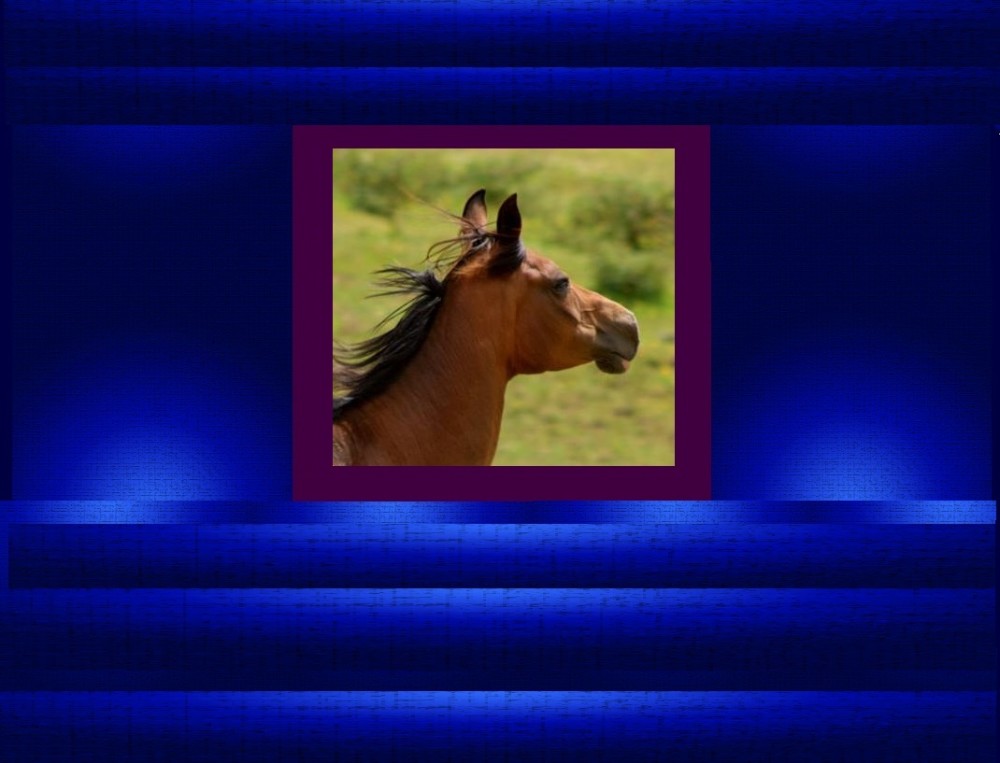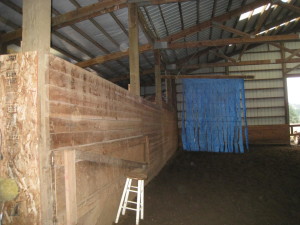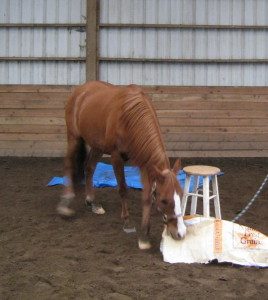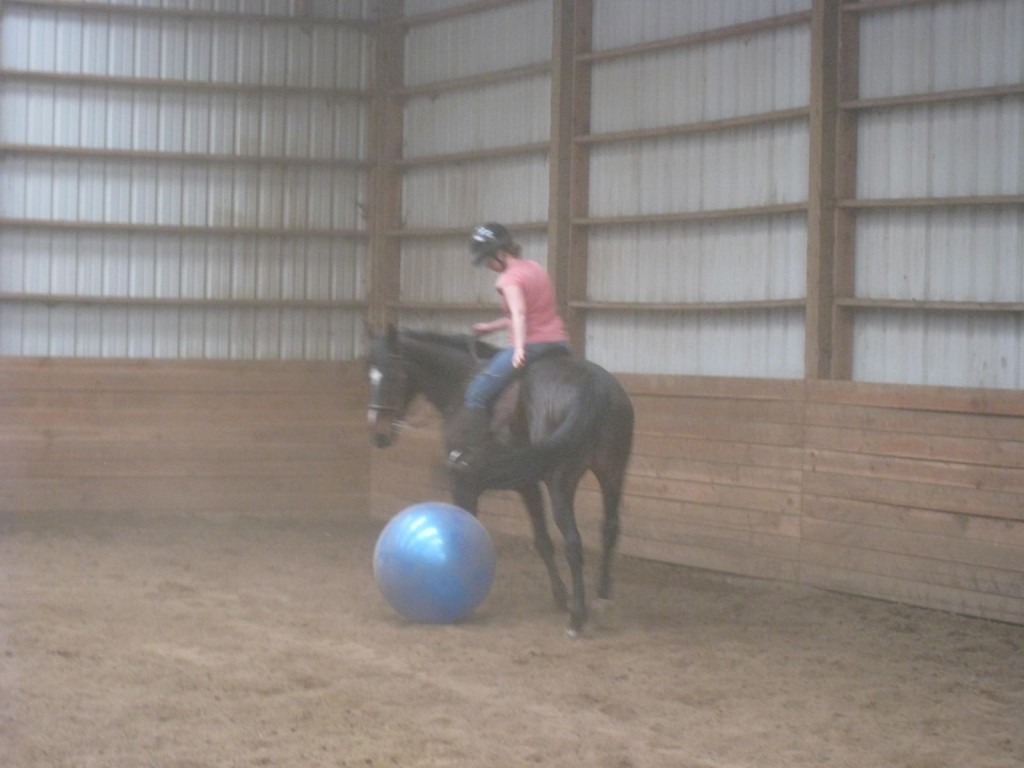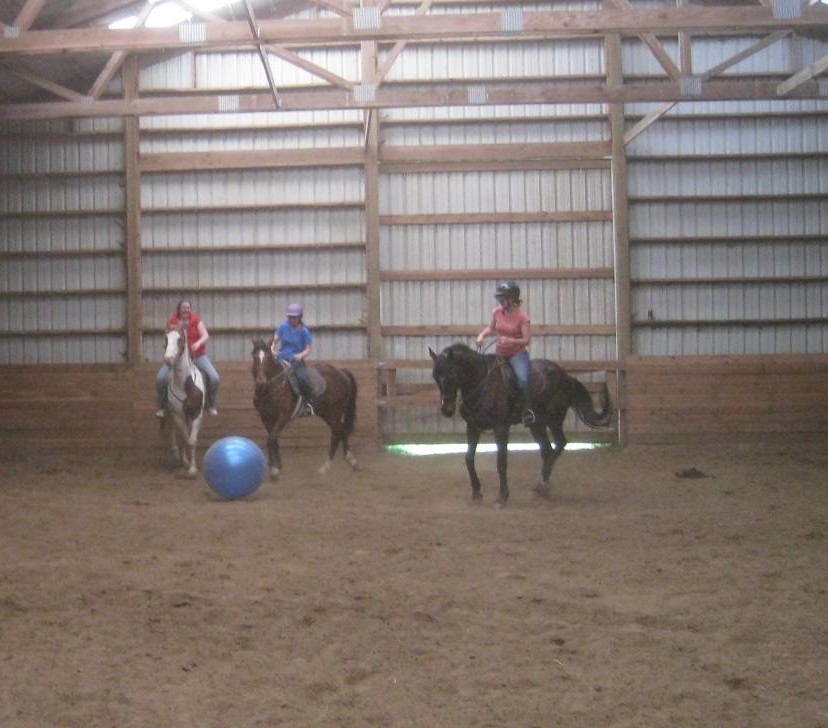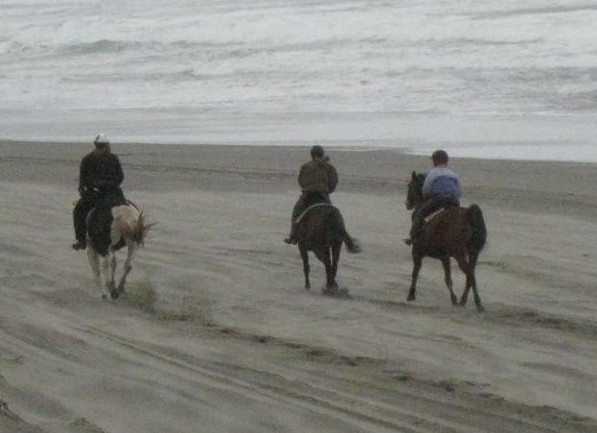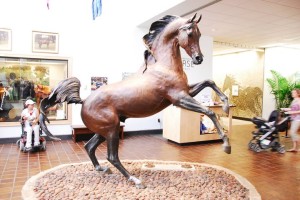People go to trainers and read books such as the one for sale on Amazon below in order to bombproof their horses:
If you click on the link you will see that it gets mostly very good reviews, and these methods of exposing horses to various items works for many, many horses. It was with great optimism that I approached training my first square horse using exposure methods. The rationale behind this training is that horses are not accustomed to many of the things they might come across while being ridden. Any unexpected sight or sound may cause an inexperienced horse to panic, spook, bolt, and unseat their rider or put the rider in a dangerous situation.
Here is a partial list of things I exposed my horse to:
- Clippers
- Plastic bags on the ground
- Plastic bags rustling around the horse’s head and body
- Tin cans in a bag
- Flags
- Buckets
- Tarp
- Balls
- Rattling metal
- Llamas
- Cows
- Pigs
- Poultry
- Motorcycles
- Tractors
- Bicycles
- Kites
- Power tools
- Lawnmowers
- The list goes on…
A typical obstacle used for exposure and trail course training at my boarding barn: horses learn to walk through the strips of tarp
Investigating a feed bag
A game of horse soccer can be a good outlet for energy with the added benefit of exposure training
It doesn’t take horses long to understand the game
In addition, I brought my horse many places:
- Horse shows
- Beaches
- Poker rides
- Arenas
- Walks down the road
- Trails
My mare, Amore, has had ten years of being ridden regularly and is now 23 years old. In the past two weeks, this horse has spooked violently at a step stool in the barn, and spun a fast 180 degree turn on the trail after a deer came out of the bushes nearby.
If you have a square type horse, you can house them on an airport runway and they will still find things that appear differently to them that they will spook at. So was the exposure training I did with this mare a waste of time? Not completely, because in the first couple of years she was ridden, her response to being startled was to freeze and then begin violent bucking. The exposure training has taught her that she will most likely survive a frightening event, and so her reactions are about 10% the intensity that they used to be. She may spook, freeze or turn, but instead of bucking or bolting off madly, she now will only take a few steps and then be ready to unlock her brain and begin thinking again.
Amore is a granddaughter of the famous Arabian, *Bask. I once read a book about *Bask that said he managed to unseat every person who ever rode him.
*Bask’s statue at the Kentucky Horse Park portrays an animated subject
My guess is that many Arabians bred solely for show were selected for a temperament that made them appear vivacious and fiery in the ring. Is my horse to blame for her genetic makeup? Not a bit. Does her temperament make her a less useful horse? That depends. She is not well suited for Western Pleasure classes, but is hardy and sure-footed on the trails.
I was astonished to discover later, when working with other horses, that exposing them to a pair of clippers once actually made them calm and bored each time the clippers were turned on in the future. With a trusting, steady temperament, many horses only need to have you see them safely past a few frightening items before they trust you completely and believe that you will never let them get hurt.
Many people get rid of spooky horses or find them unsuitable for riding outside the arena. My solution to this problem was to learn how to become a better rider. There are ways of riding that give you such a secure base that a horse can spin around beneath you, skitter sideways or leap into the air and it no longer is much of a concern for you. I say this after learning the hard way that no amount of trying to balance in the saddle was going to save me if my horse spun around and galloped off. Part of this blog is to explain that people with square horses don’t necessarily want to ride the way the majority of riders do either.
If you have a horse that seems untrainable or unmanageable, don’t give up yet! I hope you will learn to see the value of these horses, as some of us other equestrians have.
